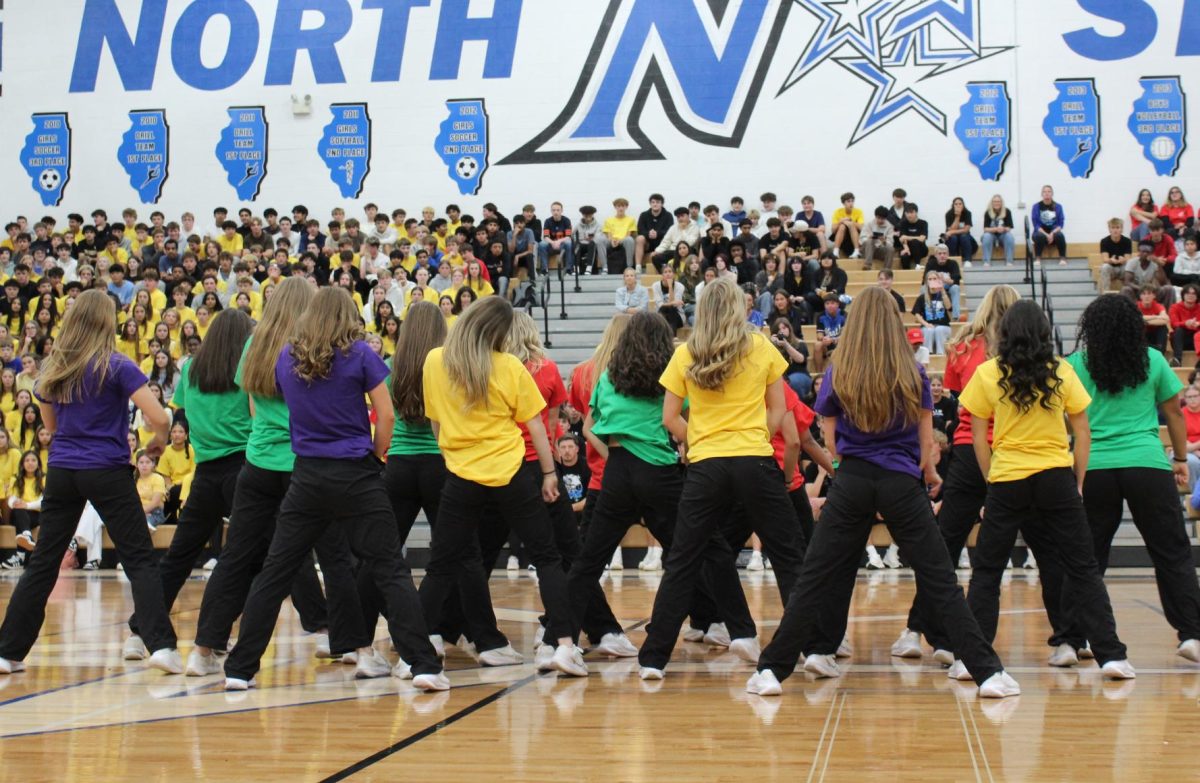Like clockwork every year, the floodgates of global holiday music are unleashed onto unsuspecting, everyday people. The same holiday classics plague loudspeakers in grocery stores, play repetitively on radio stations and bombard individual streaming accounts of listeners everywhere. Christmas classics such as “It’s Beginning to Look a Lot Like Christmas,” “It’s the Most Wonderful Time of the Year” and “Jingle Bell Rock.”
However, these redundant classics are not the only songs played this time of year intended to spread gleeful holiday cheer. In anticipation of the holiday season and the syrupy attitude of love and joy, artists release new Christmas songs to not only contribute to the festive spirits but also to achieve something all of the greats have: a sense of timelessness.
Every year, listening to new releases of Christmas music always leaves a vile taste in my mouth. It feels painfully obvious that artists are trying too hard to attain the level of relevance our Christmas classics have. Most newer songs utilize obnoxious pop productions, include an abundance of lyrics with so little actual meaning, slap on an overlay of jingle bells and call it a day. I’m looking at you, Cher’s “DJ Play a Christmas Song.” It’s almost as if these corny, half-baked releases are treating this pursuit of a good Christmas song like it’s some scientific formula.
Justin Bieber’s “Mistletoe,” or Ariana Grande’s “Santa Tell Me” seem to be the more significant of these contemporary releases, topping charts based on their extensive amounts of streams each year. These songs contain most of that gripe-worthy material, such as lyrics that are designed to shout out specific holiday keywords rather than have an actual meaning, “Word on the street, Santa’s coming tonight/Reindeer’s flying through the sky so high,” sings Bieber. “With you, shawty, with you/with you, under the mistletoe.” And the obligatory and excessive use of jingle bells. If you’ve heard one of these songs, you’ve heard them all.
I don’t intend to discourage the release of new Christmas music each year, especially because many artists release covers of well-loved songs that turn out to be of great quality. Some of my favorite renditions from recent years of our highly regarded classics are Pheobe Bridgers’ “Have Yourself a Merry Little Christmas,” Laufey’s “Winter Wonderland,” Lucy Dacus’ take on Wham’s “Last Christmas” and “Marshmallow World” covered by the Regrettes. What I love about covers of classic Christmas music is that it’s the same songs we’ve come to know and love, yet with different individual stylistic choices made by various artists. These musicians are offering up a different perspective on these songs, which provides a wonderful sense of novelty.
However, in general, I find the yearly releases of brand-new Christmas songs by contemporary artists boring and unoriginal. They lack any kind of innovativeness or risk-taking that contemporary music needs. I’m unimpressed by the reuse of the same production elements as if they’ll ever surmount the greatness of the classics I grew up listening to.
I realize that these contemporary, poppy releases remind me of what the holidays have become. Rather than a season meant to appreciate your loved ones, it has evolved into the epitome of capitalism and materialistic assets. To me, it seems as if these unpleasant instrumental and production features like autotune and overuse of synths manage to embody the commercial, superficial values of the holiday rather than channeling the heartfelt, authentic message of Christmastime. It’s apparent that many of these contemporary artists are simply trying to profit off of this time of year by releasing new music rather than by creating music ignited by true inspiration or wholesome feelings for the holidays. They write cheap, meaningless lyrics accompanied by undeveloped melodies with just the right amount of catchiness to earworm their way into the minds of the general public. I enjoy the classic songs that utilize aspects of jazz, classic rock and Motown because they take me back to a simpler time. I associate our beloved classics with a time when it was less apparent that the holiday season was rooted in consumerism and overconsumption rather than the spirit of hope and love every young child is conditioned to believe. That’s part of why we’ve immortalized these same classic songs and allowed them to stick around for so long, with many of them growing older than 50 years.
I’ll never think of Justin Bieber, Ariana Grande or Kelly Clarkson when this time of the year rolls around. It will always be classics sung by artists like Andy Williams, Frank Sinatra, Bing Crosby, Darlene Love, and Brenda Lee.
I do have to note that Mariah Carey’s “All I Want for Christmas is You” is recognized as one of the most famous songs of this genre, dominating charts with the massive number of streams produced every year since its original release in 1994. This is certainly a song that follows the stylistic choices of these contemporary pop Christmas songs that I’ve expressed my dislike for, yet I don’t find it as ingenuine as many others and consider it deserving enough to be grouped into a category with the classics. Is it my favorite song out there? Not necessarily, but I recognize it as a solid, good-quality song. I believe that it’s elements such as Carey’s vocals that make this song stand out from the other pop-based holiday songs and establishes a sense of individuality from the rest. But most likely, it’s simply the fact that I’ve never known a time when this song didn’t exist, and like many of the classics, I have this unwavering sense of nostalgia that ultimately persuades me to thoroughly enjoy the song.
These same Christmas songs and artists are immortalized on streaming charts, present on radio stations and played relentlessly inside your local Walmart for a reason. The nostalgia many of us have for the holiday season is strong enough alone to keep these same songs playing repeatedly every year, along with many of our favorite classics having genuinely good lyrics and production value. If these contemporary artists don’t take into consideration these aspects that have caused so many people to find catharsis exclusively in the highly revered classics, they’ll likely never beat out the ironclad nostalgic association we have for these timeless songs.
There will forever be the people who insist that Christmas music is overplayed and overhyped, arguing that listening to the same few songs every year gets redundant after a while. I emphasize the fact that this sense of familiarity and repetitiveness is okay, in fact, it should be embraced. This time of year should be about comfort and reverting to our senses of childlike wonder and glee. So next time anybody tries to tell you that Christmas music is annoying, or overplayed, so what? ‘Tis the season!










